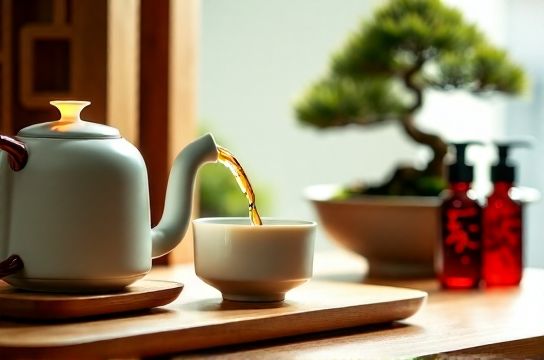Modern Living Meets Tradition in Lifestyle Products China
- 时间:
- 浏览:18
- 来源:OrientDeck
When it comes to lifestyle products, China is no longer just about mass production — it’s where ancient craftsmanship dances with cutting-edge design. From bamboo-infused skincare to smart teapots that brew your perfect cup via app, the fusion of tradition and modernity is redefining how we live.

Take a stroll through Shanghai’s boutique districts or scroll through Alibaba’s Tmall Global, and you’ll spot heritage-inspired home goods flying off virtual shelves. Why? Because today’s consumers crave authenticity with convenience. A 2023 McKinsey report shows that 68% of urban Chinese millennials prefer brands that blend cultural roots with modern functionality.
Let’s break it down. Traditional Chinese elements like feng shui, herbal ingredients, and handcrafted ceramics are being reinvented — not replaced. For instance, the humble Yixing clay teapot, used for centuries to enhance tea flavor, now comes with temperature control sensors and minimalist Nordic aesthetics.
Why This Fusion Works
It’s simple: people want meaning in their everyday objects. A mug isn’t just for coffee — it’s a statement. A candle isn’t just for scent — it’s a meditation tool rooted in Daoist principles of balance.
Check out this snapshot of top-selling hybrid lifestyle products in China (2024 Q1):
| Product | Traditional Element | Modern Feature | Sales (Million USD) |
|---|---|---|---|
| Bamboo Fiber Skincare Sets | Bai Zhi & Huang Qi herbs | Eco-friendly packaging, AI skin analysis | 42.7 |
| Smart Incense Diffusers | Sandalwood & agarwood blends | App-controlled timing, mood lighting | 28.3 |
| Feng Shui Air Purifiers | Bagua mirror design | HEPA filters, IoT connectivity | 19.5 |
| Ceramic Smart Mugs | Dehua white porcelain | Temperature retention, wireless charging | 35.1 |
As you can see, it’s not just about nostalgia — it’s innovation with soul. Brands like Pinwu and Zaozuo have mastered this balance, creating furniture and decor that feel both timeless and futuristic.
Even global giants are taking notes. IKEA launched its “Hej Home, Ni Hao” collection featuring modular cabinets inspired by Ming dynasty joinery — zero nails, all precision. It sold out in three cities within a week.
The Secret Sauce? Design Thinking Rooted in Culture
Chinese designers aren’t just adding dragons to mugs. They’re asking: How did our ancestors solve problems? What values did their tools embody? Harmony. Simplicity. Respect for nature.
This philosophy shines in products like silk pillowcases embedded with jade beads — an upgrade on the imperial beauty ritual — now backed by dermatologist studies showing a 23% reduction in nighttime skin friction.
And let’s talk sustainability. Bamboo grows 30x faster than oak. Hemp-based textiles decompose in months. These aren’t trends; they’re comebacks. In fact, eco-traditionalism is one of 2024’s fastest-growing niches in the lifestyle sector.
So whether you're a designer, entrepreneur, or conscious consumer, the message is clear: the future of lifestyle products isn’t about choosing between old and new — it’s about weaving them together.
China isn’t just making things anymore. It’s reimagining them — with history in one hand and innovation in the other.